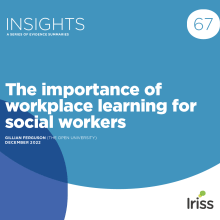Explore how a place-based approach enables effective work with people and communities to improve their health and wellbeing.
Introduction
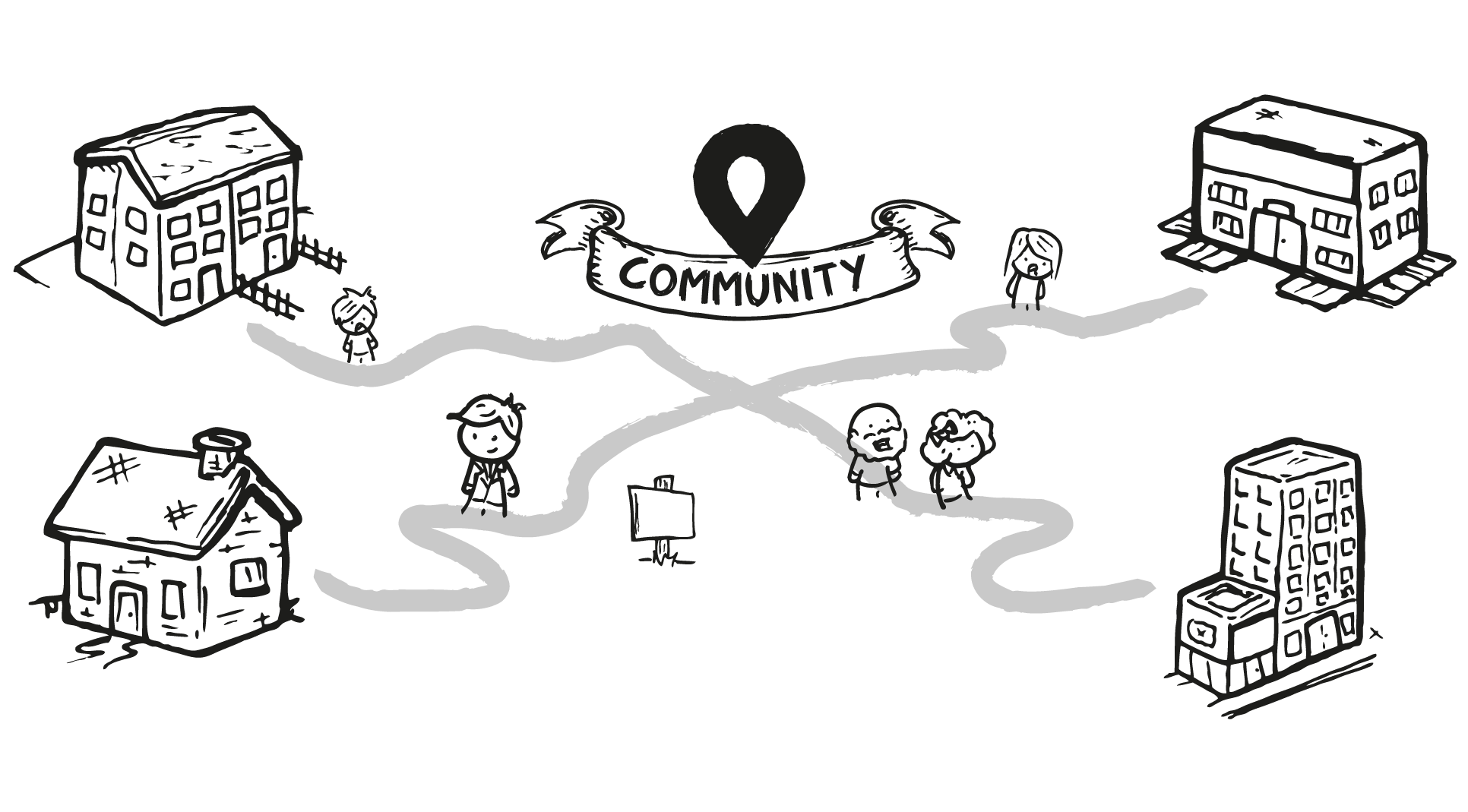
Place-based working is a person-centred, bottom-up approach used to meet the unique needs of people in one given location by working together to use the best available resources and collaborate to gain local knowledge and insight. By working collaboratively with the people who live and work locally, it aims to build a picture of the system from a local perspective, taking an asset-based approach that seeks to highlight the strengths, capacity and knowledge of all those involved.
This differs from top-down approaches that rely on an overarching systemic (or national) view that is then broken down into sub-systems (local views). By focusing on the deficits, rather than the assets, top-down approaches can sometimes be criticised for undervaluing the importance of local knowledge and assets and, as a result, the differentiation between local and national issues becomes misunderstood. This can be problematic, particularly when thinking about improving health and wellbeing, as it can cause us to think that the national perspective is all that matters and prevent us from understanding local needs.
There are a number of issues with the precursors to place-based approaches (e.g. active regional development, place-blind methods or community planning) such as a misdiagnosis of issues, lack of an asset-based approach, tokenistic community engagement and short-term horizons. Together, these have led to an increased demand for approaches that value the importance of place, while also understanding the need for embedded, person-centred ways of working. While these approaches sought to improve local resources, they didn't have any specific place-based considerations and therefore could be considered 'top-down' as opposed to community focused 'bottom-up' approaches. A place-based approach, on the other hand, acknowledges the complexity of people's lives by working in direct partnership with a range of people and provides one way of uncovering the needs and strengths of local communities.
This edition of Iriss ON... explores the potential for a place-based approach to enable effective work with people and communities to improve their health and wellbeing through asset-based, locally embedded, cross-sector working.
Why place-based now?

The current climate poses particular challenges for those who work in, and who are supported by, social services. For instance, there is increasing demand for services, growing financial pressures and a shift in the balance of care into more personalised, community based services.
The national agenda of public service reform and the integration of health and social care in Scotland emphasise the growing requirement for localised responses to the demands and challenges facing health and social care in particular, and the public sector more generally. However, the perceived failure of conventional approaches to reduce inequalities and prevent problems is still leading to poorer outcomes for people despite local services responding to the complex needs of individuals, families and communities.
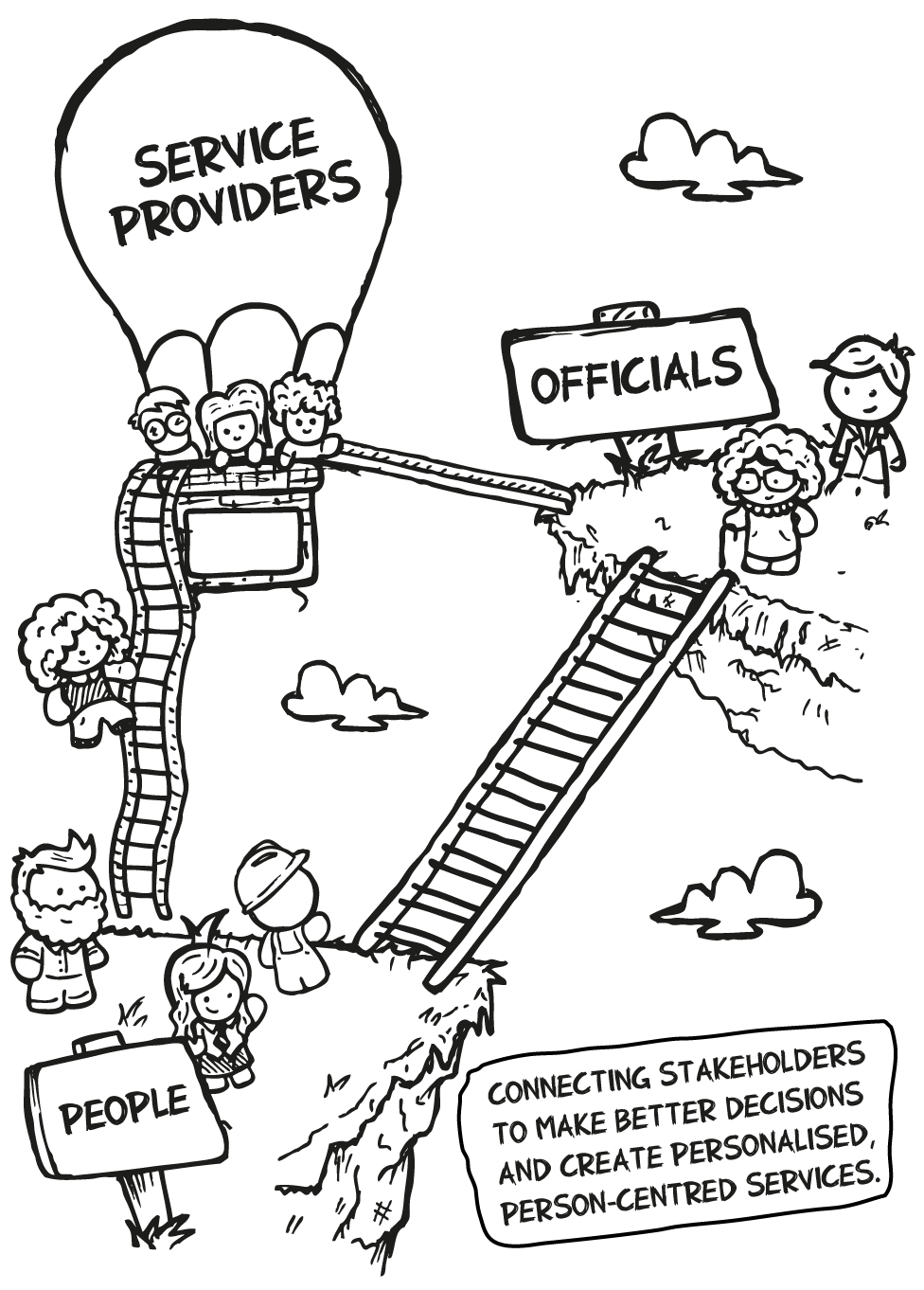
In response, policy and legislative developments in Scotland are increasingly placing priority on collaborative working between people who provide services and those who use them. This aims to enable people to exercise choice and exert greater control over the types of support needed for better personal health and wellbeing outcomes by engaging services with the flexibility and scope for innovation.
Place-based approaches may be one way of encouraging this way of working and may help to generate innovative ways to tackle some of these issues. This is explored in the examples that follow.
Practical examples
Place-based approaches have been used by different organisations, in different ways, for different reasons. It is not a one-size-fits-all approach and is often adapted to meet local needs, as well as the needs of the organisations conducting the work.
Joseph Rowntree Foundation
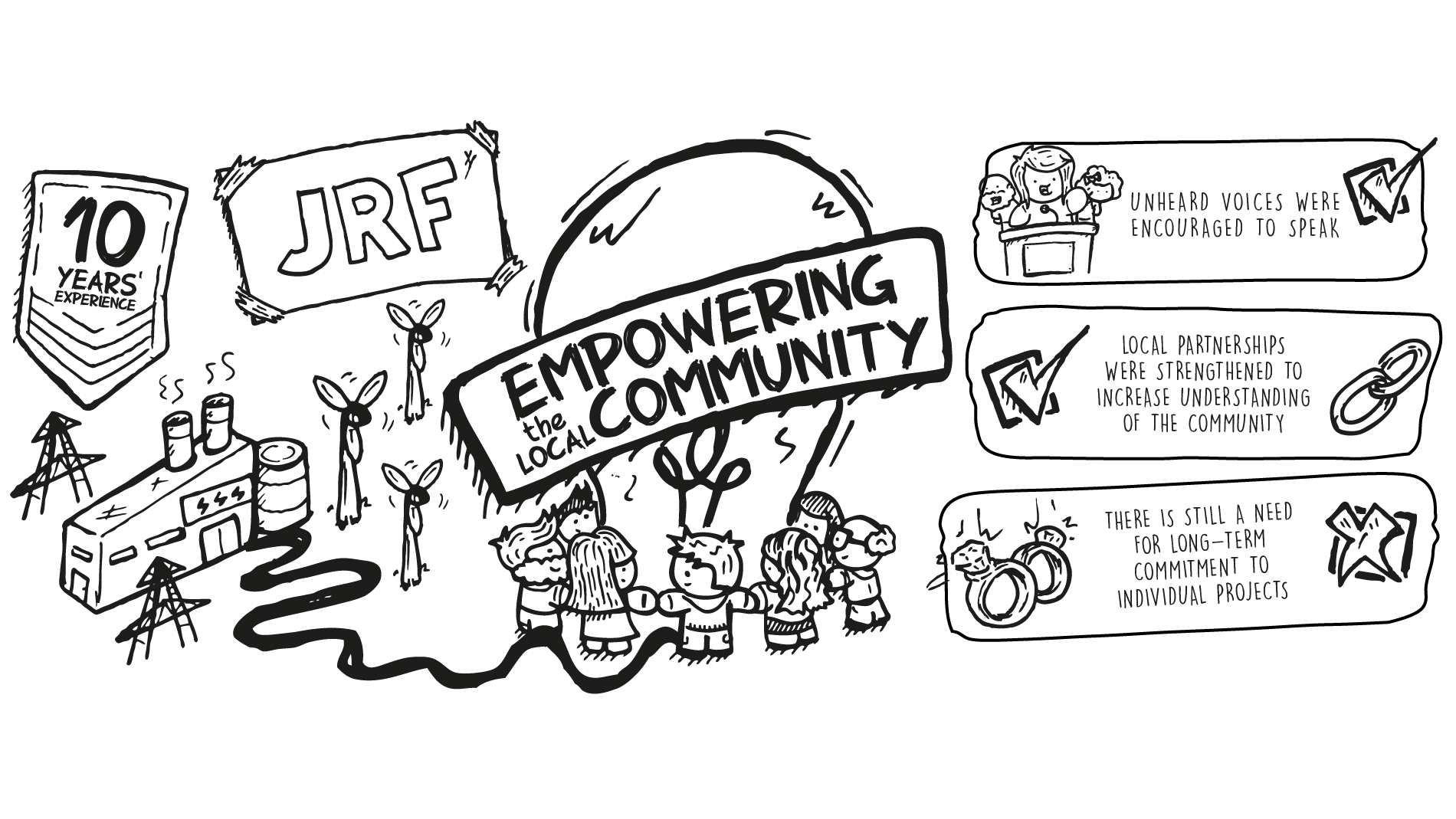
The Joseph Rowntree Foundation (JRF) has spent ten years working in Bradford with the aim of improving community cohesion and empowering local citizens. They chose to work in Bradford due to the area's diverse economic and ethnic profile.
Throughout this programme of work, providing safe places for debate - where everyone was regarded as an equal and previously unheard voices were encouraged - led to strengthened local partnerships. Those involved have increased their understanding of the local community.
However, the aim of the programme was to support the community to make improvements, not just to understand it. The evaluation report reflects the need to have worked more closely with local stakeholders, as well as a need for more long-term commitment to the individual projects they worked on. JRF say they could have improved this outcome by involving people in the design of the projects from the start and translating their research and findings into local action.
Total Place
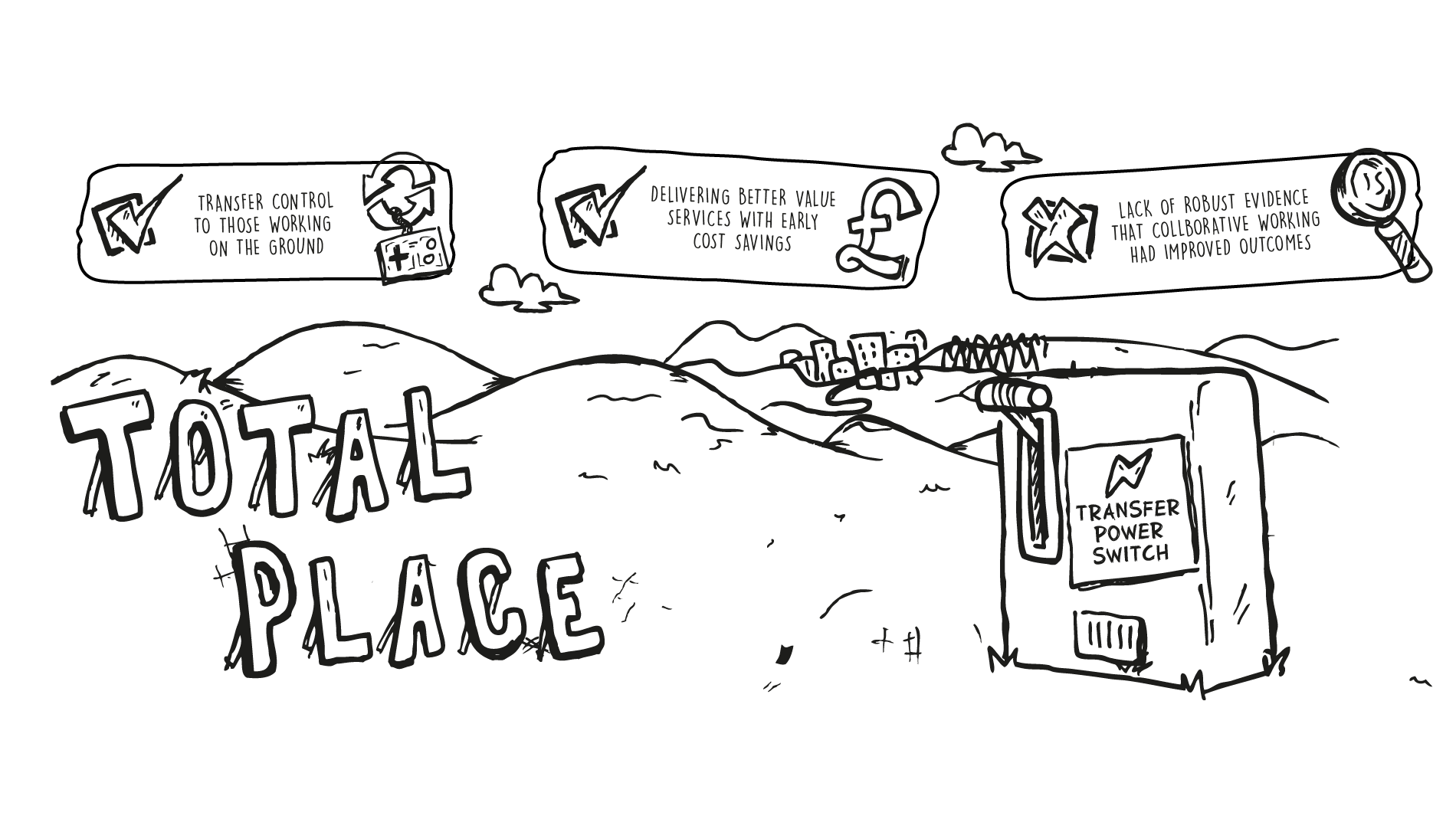
Total Place, on the other hand, was a programme comprising 13 pilot schemes sponsored by local communities and Local Government. It involved 63 local authorities, 34 primary care trusts and 13 police authorities. Unlike the Joseph Rowntree Foundation work in Bradford, the overall aim was to transfer control to those working on the ground through the delivery of better value services with an expectation of early cost savings to validate the work. In reality, it is still unclear if Total Place achieved the cost savings it predicted. The initiative sought to implement preventative approaches, but its evaluation was subject to numerous challenges. Furthermore, only 10 of the 13 pilots were evaluated based on person-centred outcomes, with 7 of the 10 reporting a lack of robust evidence that collaborative working had improved outcomes for the people using services8.
'Altogether Better'
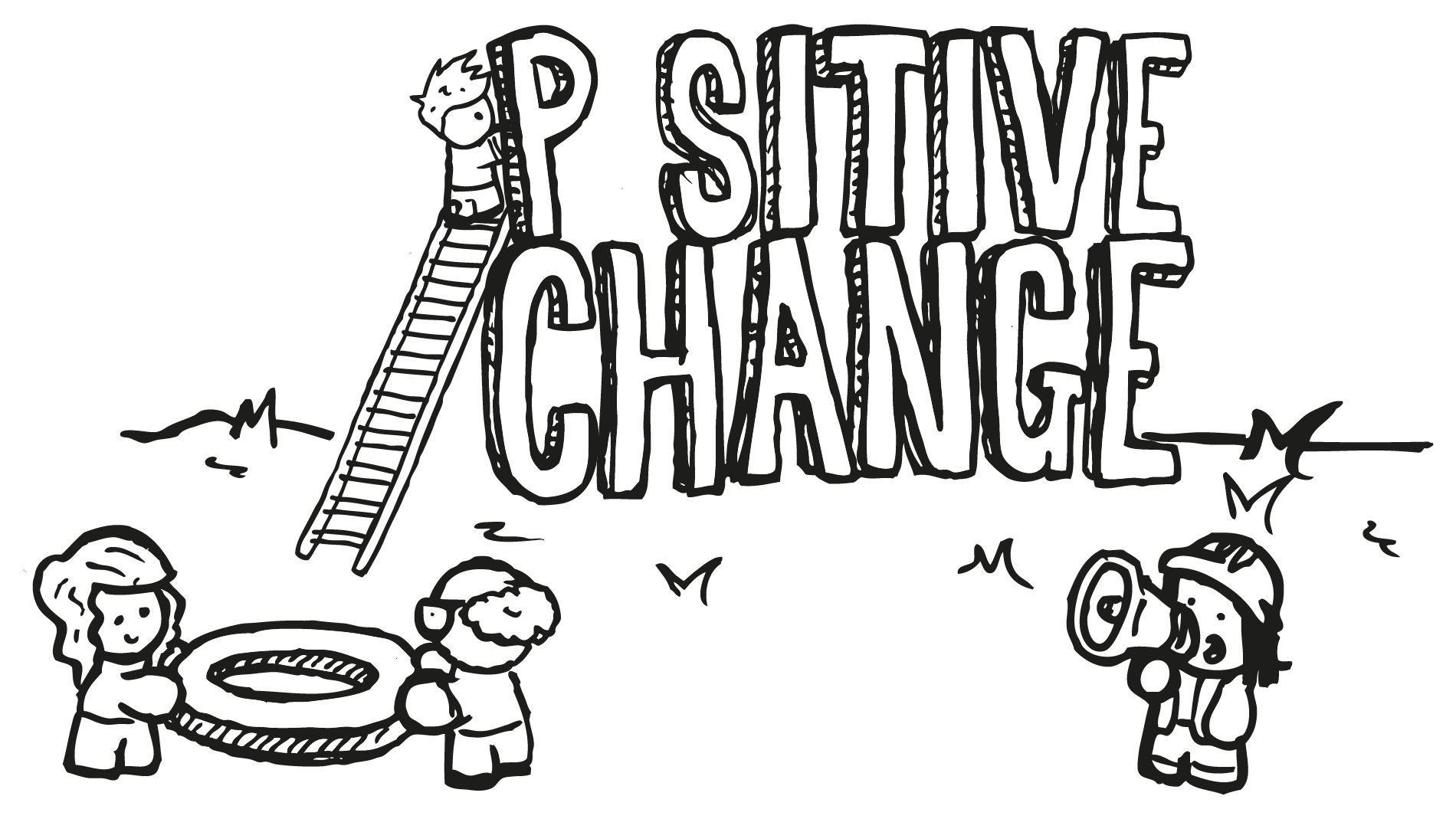
Similarly, West Cheshire's Whole Place Community Budget Pilot 'Altogether Better' is working locally in greater Manchester to reduce the 'wasteful' duplication of resources and services by promoting an integrated, cross-sector approach to service delivery. While a fundamental part of this process is ensuring local residents and providers are actively involved in the design and delivery of services to improve the outcomes of people who live locally, the key aim for both examples remains the reduction of costs. This project is already reporting cost savings and reduced requirement for acute interventions. While this demonstrates that pooling resources to deliver solutions could tackle resource and financial issues, it does not report on whether these services provided positive outcomes for the people living locally.
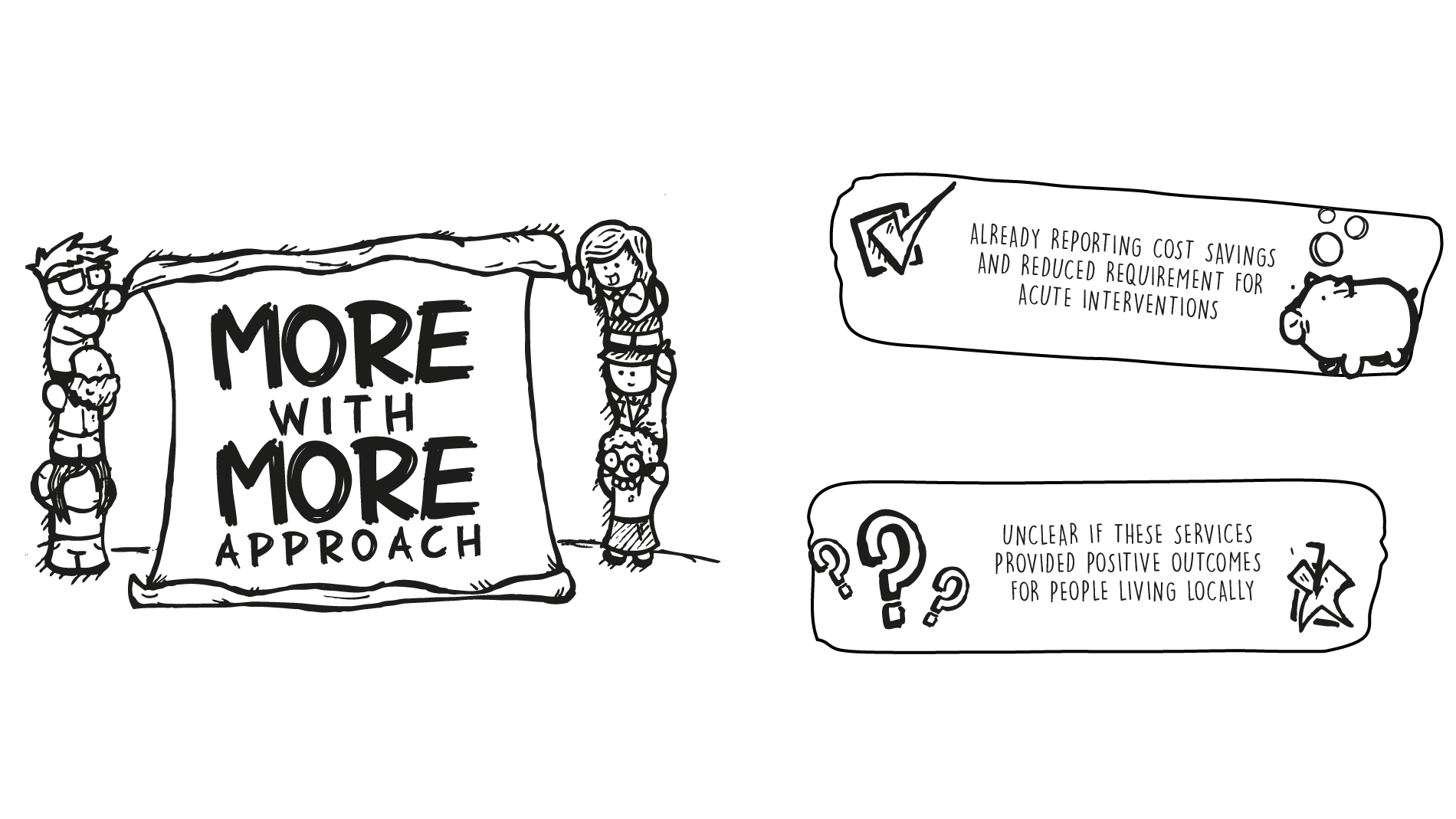
Hambleton and Howard (2013) caution against a primary focus on cost savings stating,
"a 'more with less' approach to the current cutbacks in public spending is unlikely to be successful. Reaching out to other partners to create a grounded 'more with more' approach holds out greater promise.
Creating cross-sector collaborations to deliver locally embedded services is one way of taking a 'more with more' approach that allows person-centred care if designed with the people who live and work locally. If used appropriately, and the right people are engaged, place-based working can be one way of facilitating this. However, the right people have to be engaged in the work from the onset and, taking learning from JRF's reflections, there should be a real commitment to follow through on the work.
'Building Healthier Happier Communities'
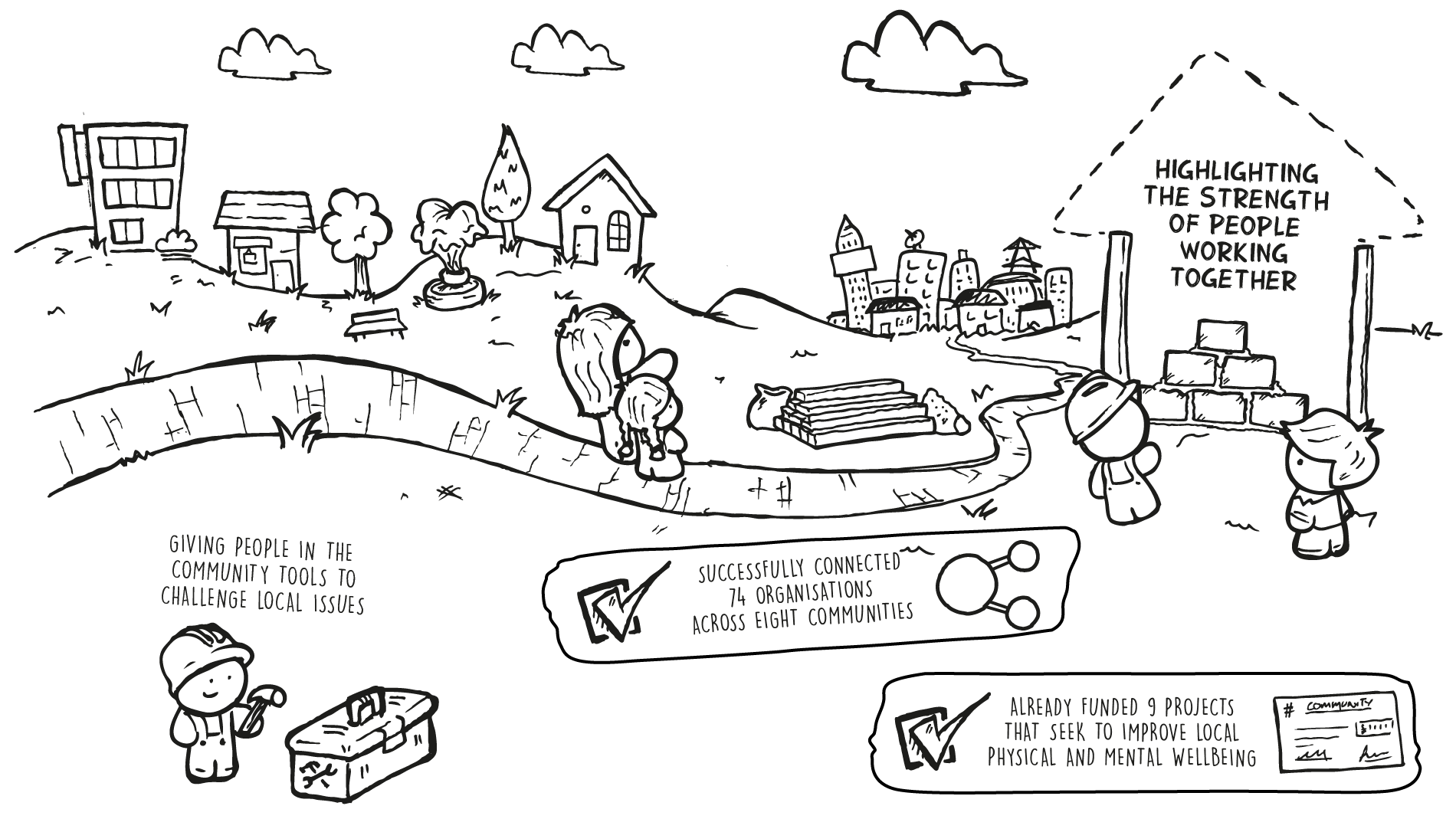
'Building Healthier Happier Communities', a programme underpinned by a strategic partnership between SCVO at a national level and Third Sector organisations at a local, community-based level aims to demonstrate this 'more with more' approach. Working locally in East Dunbartonshire, this programme aims to bring organisations together to deliver joined-up care and support for people living locally by supporting projects that are community-led and preventative. While this project is still in its infancy, early evaluation shows that they have already successfully connected 74 organisations across eight communities and funded nine projects that seek to increase the physical and mental wellbeing of people living locally.
This programme aims to highlight the strength of people working together to challenge local issues for the benefit of the whole community. In doing so, they highlight that without involving the people who live and work locally, it can be too easy to get caught up in the systemic (national) view, rather than addressing the issues through a bottom-up approach as discussed earlier.
Equally Well Test Sites

Involving people who live and work locally, however, can come with challenges. This is demonstrated in the Equally Well Test Sites. These Test Sites were geographically located across Scotland as a new approach to redesigning public services to improve health inequalities. These sites were collectively provided with £4 million funding from the Scottish Government from within the overall health and wellbeing budget. The aims of the programme were:
- Reducing health inequalities
- Improving outcomes for service users
- Improving efficiency of public resources
Early evaluation (at 30 months) of the Test Sites showed that while 40% of stakeholders reported improved joint working, only 6% reported service user engagement and, furthermore, only 3% presented outcomes for service users being improved. Although short-term outcomes were being met, the Equally Well Task Force suggests that longer term changes such as reducing health inequalities could take 'a generation'.
While this highlights the challenges in cross-sector working and in engaging service users to redesign services, it also demonstrates that with the right factors in place (see Principles and Pitfalls section) it remains both possible and desirable.
Further reading
These are just some examples of how different organisations have used a place-based approach. These different approaches highlight the need to work in collaboration with the people who live and work locally to effectively meet their needs. They also highlight the importance of focusing on improving personal outcomes as opposed to reducing costs locally to meet national outcomes.
Further examples of place-based work in practice are available:
- Community Catalysts
- From Whitehall to Hospital Ward
- Unusual Suspects
- What Works Scotland
- Animating Assets
Principles and pitfalls
The examples shown demonstrate place-based approaches being used in ways to address both local and national outcomes. There are a number of key principles that can be drawn from the practical examples.
Partnership Approach: Engage stakeholders across all sectors in collaborative decision-making
Example: Pull together local assets and knowledge through shared leadership by including decision makers, service providers and citizens who live and use services locally. Breaking down existing boundaries is key to success.
Central Control: Be led by the people who live and work locally
Example: Provide safe spaces for discussing challenging issues and ideas.
Community Engagement: Encourage collaborative working, critical thinking and problem solving
Example: Facilitate, influence and enable partners to take action forward.
Local Flexibility: Provide a robust foundation for decision-making
Example: Establish clear roles / authority among all representatives of key stakeholder groups.
Long-Term Commitment: Ensure there are adequate time and resources to commit to this work
Example: Discuss expectations with all of those involved. Be flexible and go with the pace of those you are working with. Shift from initiatives to an integrated longer-term perspective.
While these principles may look easy on paper, as with all approaches there can be some challenges in ensuring the best possible outcomes are achieved in practice.
Key pitfalls of place-based working include:
- Power Imbalances: As place-based approaches are being rolled-out across the UK, there is a real danger that the powerful will become more powerful i.e. by continuing to work only with the people who are already engaging in change locally there is a danger of further widening the void between those who are engaged and those who are not. Evidence highlights, however, that this can affect the decisions made by public service providers. Therefore, when working together it is important that the power balance is redistributed equally amongst all those involved.
- Partnership: There should be a balance of involvement from citizens, providers and senior leaders to avoid tokenistic community involvement. While it can sometimes be challenging to engage people, especially those who haven't had experience of their opinions being valued in the past, it is advantageous in order to ensure all local voices are heard.
- Expectations: When working with people, it is important to be mindful of their expectations, as well as your own and what you can and cannot achieve by working together in this way. For example, insufficient funding and/or short-term horizons can lead to disappointment for those living locally if not discussed from the onset. Therefore, it is essential to be open and honest with one another about your expectations, as well as what you can and cannot achieve.
- Taking Action: It is important that, where applicable, place-based work can lead to the development of sustainable innovative solutions that support local services to respond effectively to the complex needs of individuals, families and the community. This can be supported through gathering evidence that highlights local strengths, needs and issues. In doing so, it is important not to misdiagnose issues or duplicate efforts. Structural economic conditions can be difficult to overturn and there is little evidence that place-based approaches can achieve this on their own. Recognise that sometimes you will need government support.
- Evaluation: Evaluating a place-based approach can be challenging. In particular, there can be challenges around capturing long-term outcomes; accommodating diverse objectives; and measuring qualitative changes such as relationships, behaviour change and participation. Gaps in data gathering and competing evaluation approaches only further these issues. To help overcome this, the evaluation strategy should be co-produced by all stakeholders from the start to help ensure that long-term outcomes and changes are captured alongside any capacity building, participation, relationships and behaviour change. While there are several evaluation options to consider, one that Iriss has used is Contribution Analysis. Other approaches include Participatory/Utilisation-Focused evaluation or Narrative Approaches.
Conclusion
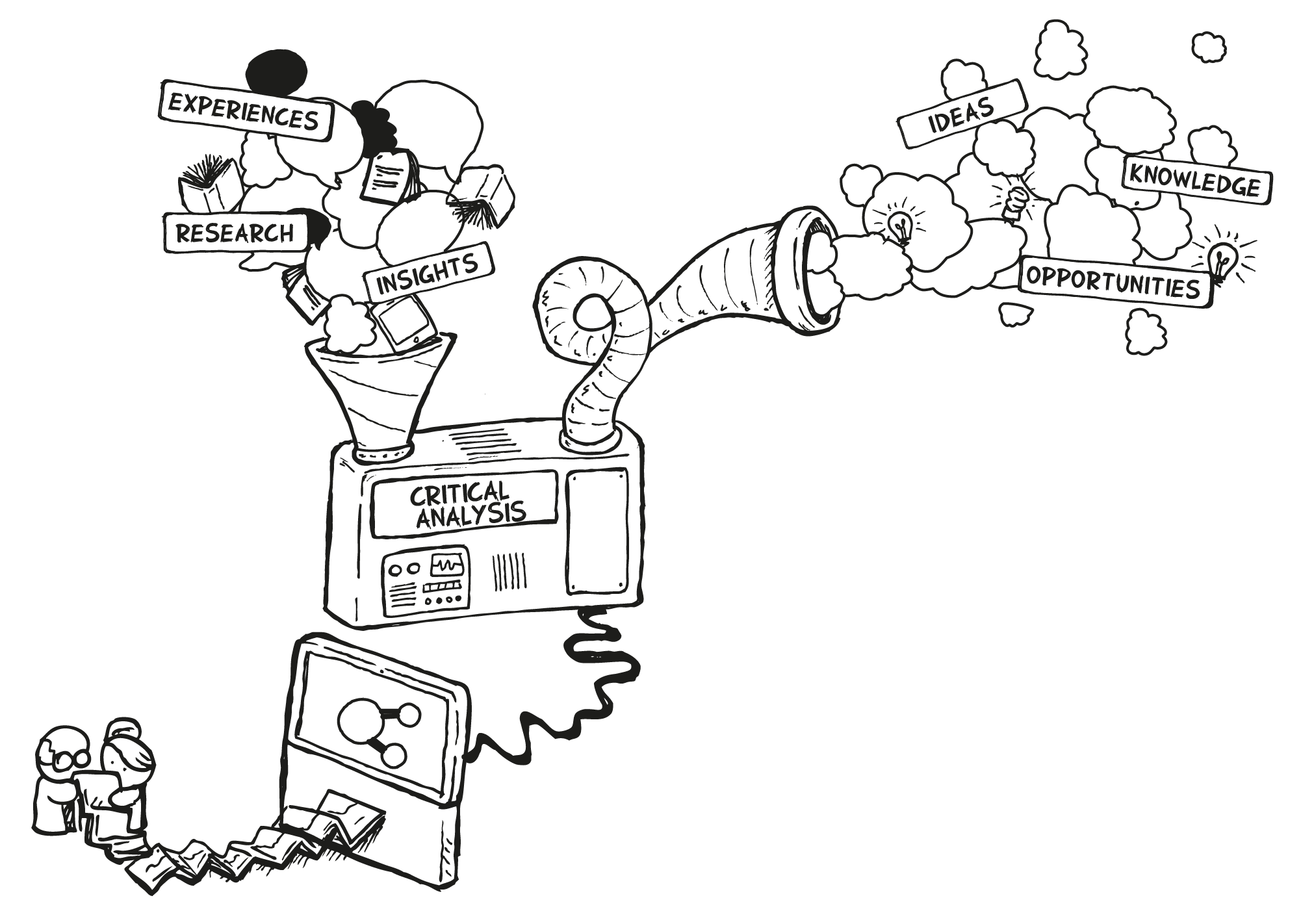
This Iriss ON... explores how a place-based approach is one way of tackling some of the challenges now faced locally when providing person-centred care and support. It highlights some practical examples of this approach, drawing out the possibilities and pitfalls it can bring.
Questions
Think about whether a place-based approach could apply in the context in which you work:
- How willing are the people you work with to trial this approach?
- How do you need to change to work in this way?
- What support is needed for local communities to work in this way?
- How can you work alongside people locally to discover the assets, strengths and capacity available to help achieve better outcomes?
- What steps will you need to take to move towards this approach?
- How will you ensure you empower all service users in this approach and not just those who can talk the loudest?
- How will you identify whether this approach has had any impact locally?
Reflect on the practical examples discussed here and use the 'principles and pitfalls' to help inform a new way of working.
References
This document is intended as a quick introduction to Place-based approaches. As interest in place-based approaches continues to grow, more and more evidence is becoming available. Please look out for new publications from What Works Scotland for more detailed analysis.
- Pugalis L and Bentley G (2014) place-based development strategies: Possibilities, dilemmas and ongoing debates, Local Economy, 19, 561-572.
- Hambleton R and Howard J (2012) Place-based leadership and public service innovation, Centre for Sustainable Planning and Environments, Department of Planning and Architecture, University of the West of England, Bristol, UK
- Matthews P (2012) The return of place in Scottish social policy, Local Economy
- Total Place (2010) A practitioners guide to doing thing differently, Leadership Centre for Central Government
- Telfer S (2013) What makes effective place based working? Lessons from JRF's Bradford programme
- Grint K (2009) Total place: Interim research report purpose, power, knowledge, time and space
- Grint K (2010) Problem, purpose, power, knowledge, time and space: final report
- Morse R (2013) Case study on integration: Measuring the costs and benefits of whole-place community budgets. National Audit Office.
- Local Government Association (2015) Scenario planning for children's services
- SCVO (2015) Building happier healthier communities
- White P and Currie S (2015) A fresh approach to building healthier and happier communities, SCVO
- Fyfe A, MacMillan K, McGregor T, et al (2011) Equally well test sites: Evaluation (PDF)
- Hastings A and Matthews P (2011) "Sharp elbows": Do the middle-classes have advantages in public service provision and if so how? Project report. University Of Glasgow, Glasgow, UK.
- Arnstein S (1969) A ladder of citizen participation
- Hobbes M (2014) Stop trying to save the world
- Bailey N (2012) Turning around the poorest neighbourhoods: Learning the lessons from 20 Years of neighbourhood-based regeneration strategies in England, in Carol Camp Yeakey (ed) Living on the boundaries: Urban marginality in national and international contexts, Advances in Education in Diverse Communities: Research, Policy and Praxis, 8, 313-328
- Bellefontaine T and Wilsener R (2011) The evaluation of place-based approaches
- Stocks-Rankin C-R (2015) Pathways to impact: Iriss evaluation report. Iriss
We'd love to hear from you
If you have been involved in or managed a place-based project, or if this article has inspired you to try out this approach, please tell us about it. You can share your stories with the Innovation and Improvement team via telephone 0141 559 5059 or email enquiries@iriss.org.uk.
Credits
- Written by Fiona Munro (Iriss)
- Reviewed by Jeremy Beaudry, Director, Design for Social Impact MDes, The University of the Arts, Stuart Eno, Team Leader, Learning and Development Team, Housing and Community Care, Perth & Kinross Council, Peter Matthews, Lecturer in Social Policy, University of Stirling
- Illustrations by Jamie Thoms, July 2015
